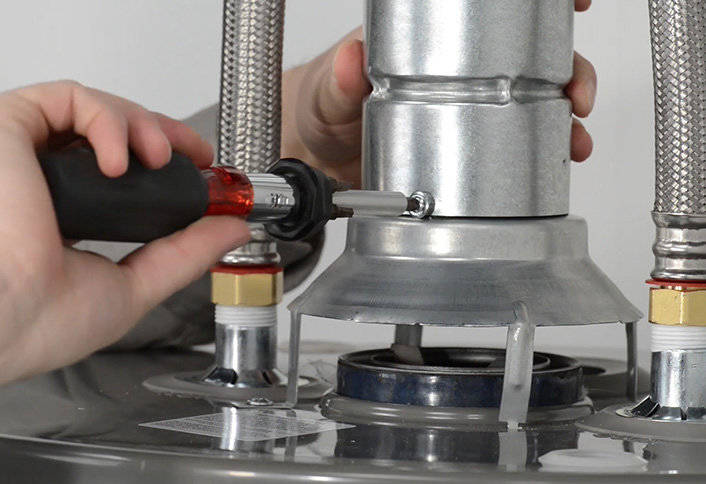Water heater vent is easy, inexpensive install

Q: During a home inspection, the inspector discovered that my water heater needed a new vent connected to the ceiling. He said it is an easy and inexpensive repair. Just how easy and inexpensive is it?
A: The repair will cost you under $20, and you can probably do it during a few commercials.
The purpose of a vent (also known as a flue or smoke pipe) is to carry out the exhaust produced during combustion in your gas water heater. (Gas appliances also have vents.) Electric water heaters don’t have vents.
The vent is connected to the top of the water heater by way of a draft hood or collar and is connected to a fitting at the point where it enters the ceiling. Most fittings in the ceiling are directly above the water heater or slightly offset.
If you were running an entire vent line from the water heater to the exterior, I would suggest you call in a professional, because there are lots of issues regarding lateral distance and vertical distance that require calculations to ensure safety.
A water heater typically will have a 3- or 4-inch vent. (Check with the manufacturer for the recommended size.) You can buy a length of venting for about $15 from a home center.
The venting is simply a sheet metal tube of varying lengths. Type “L” and type “B” are both double-walled vents. Type “L” is lined in stainless steel and is used for oil and gas heaters. Type “B” is lined with aluminum and is used for gas appliances only.
If the fitting in the ceiling is directly above the water heater’s draft hood, then you only need a straight length of venting. If the fitting is not directly above, you will need to buy an offset.
This is a piece of tube with an offset angle. It allows you to change the direction of the venting to reach different locations. You simply twist the offset to rotate directions.
Figure out which parts you need before you head to the home center.
Working with sheet metal is pretty simple, but it can slice you to ribbons. When you buy a vent at a home center, the edges are finished and fairly safe. It’s when you cut the vent that the blood can flow.
Wear heavy gloves and use tin snips to trim the end of the vent to fit. The bottom of the vent should fit over the lip on the draft hood. Connect the two together with three self-tapping sheet metal screws, spacing them evenly around the vent.
If you need to install an offset, it typically goes in between the vent and the draft hood. It’s the same deal with the sheet metal screws to secure it.
The top of the vent should fit snugly to the fitting in the ceiling. Use sheet metal screws to secure it.
If you have any small gaps along the vent or at your connections, you can use foil tape to seal them up. Just don’t seal up the spaces below the draft hood, as these are important for proper venting.
Mike Klimek is a licensed contractor and owner of Las Vegas Handyman. Questions may be sent by email to handymanoflasvegas@msn.com. Or mail to 4710 W. Dewey Drive, No. 100, Las Vegas, NV 89118. His web address is www.handymanoflasvegas.com.
Do-it-yourself
Project: Installing a vent
Cost: Under $20
Time: Under 1 hour
Difficulty: ★★














